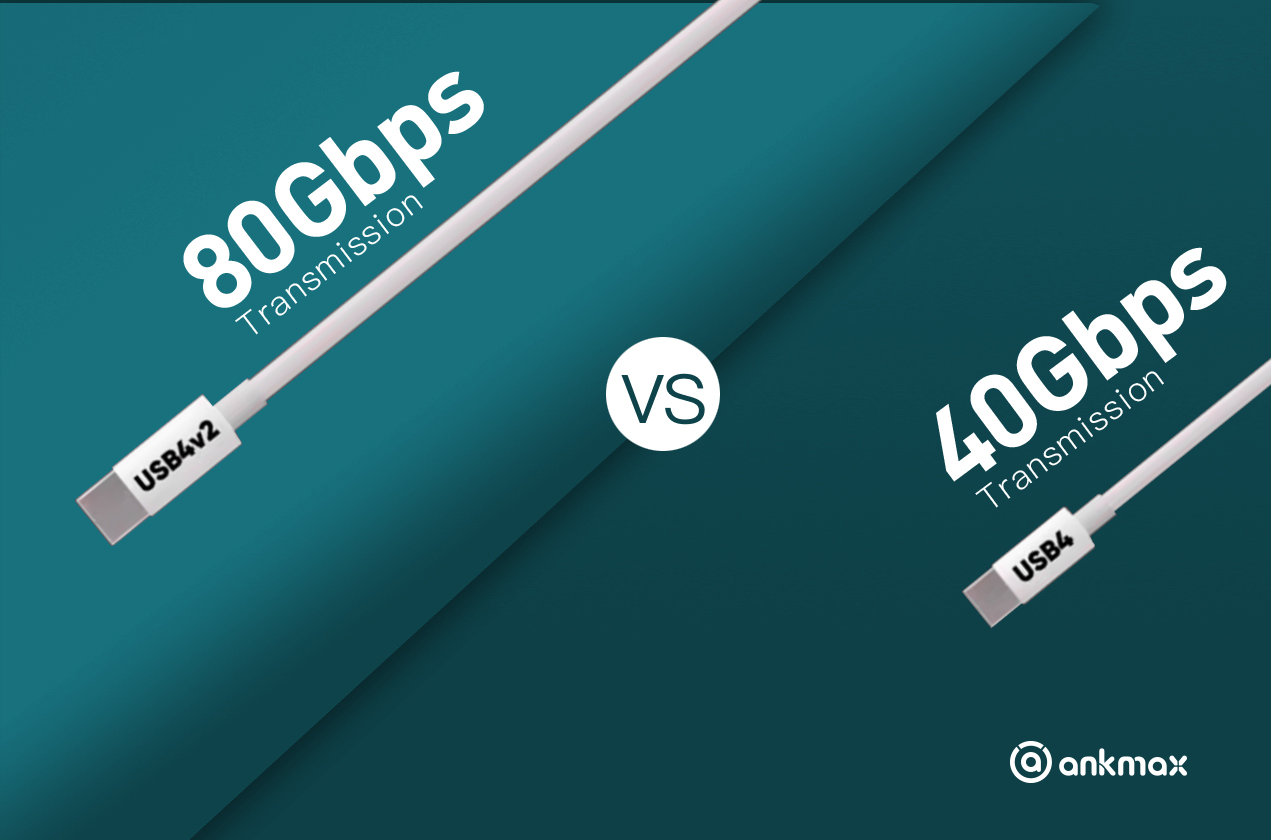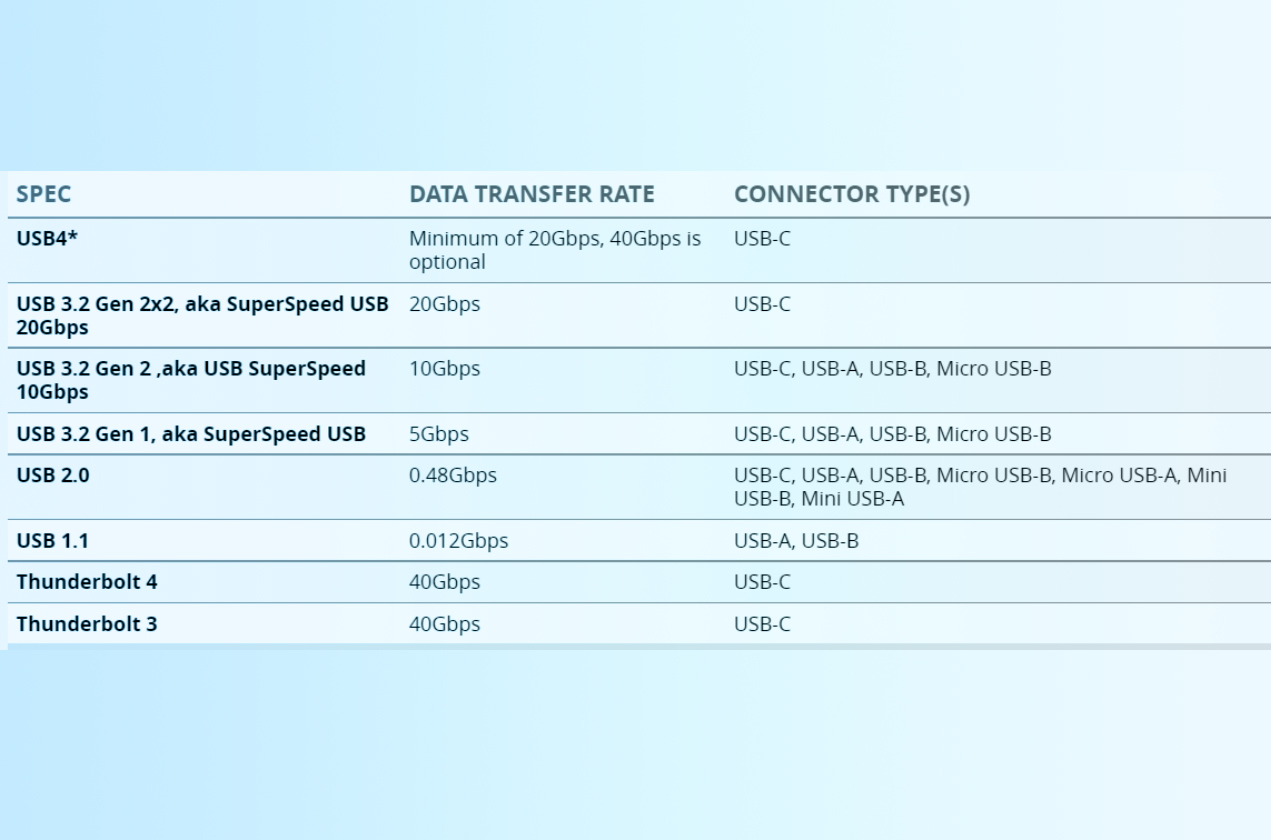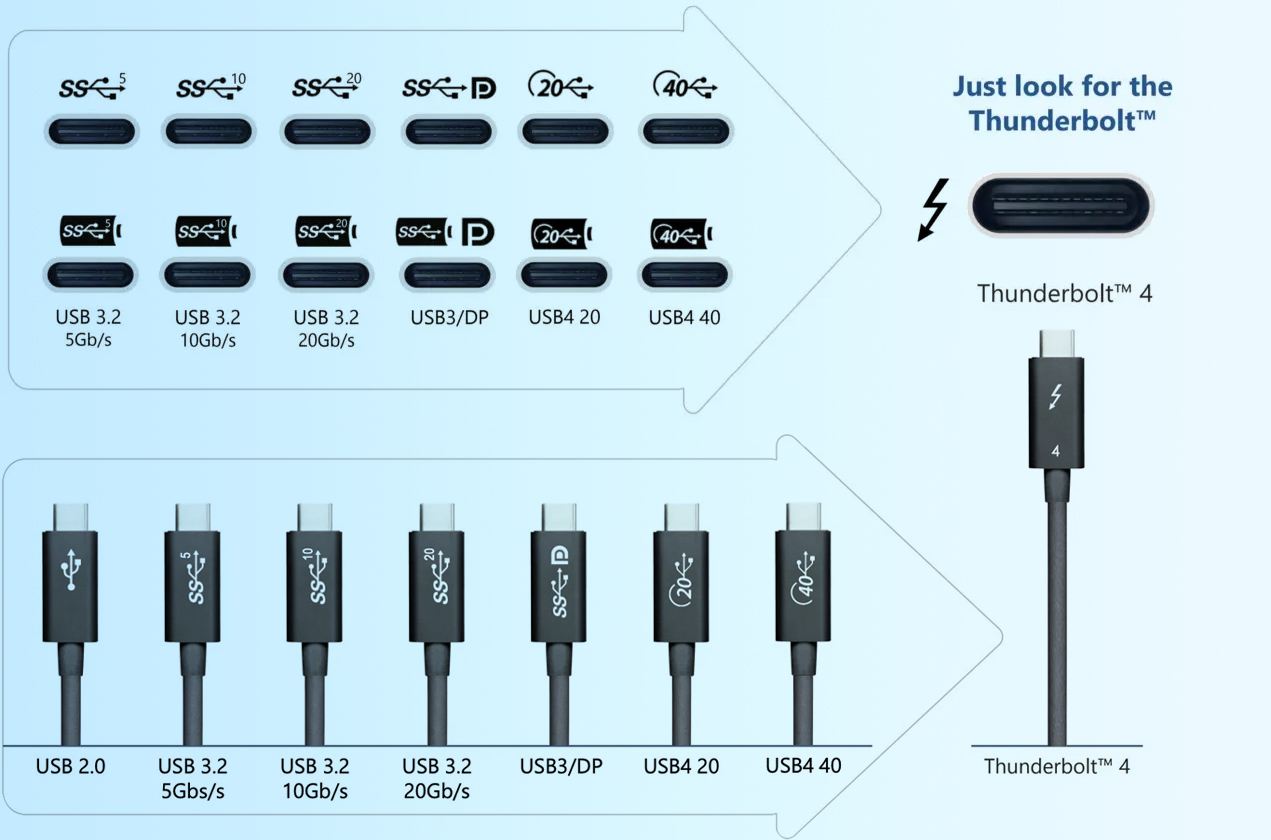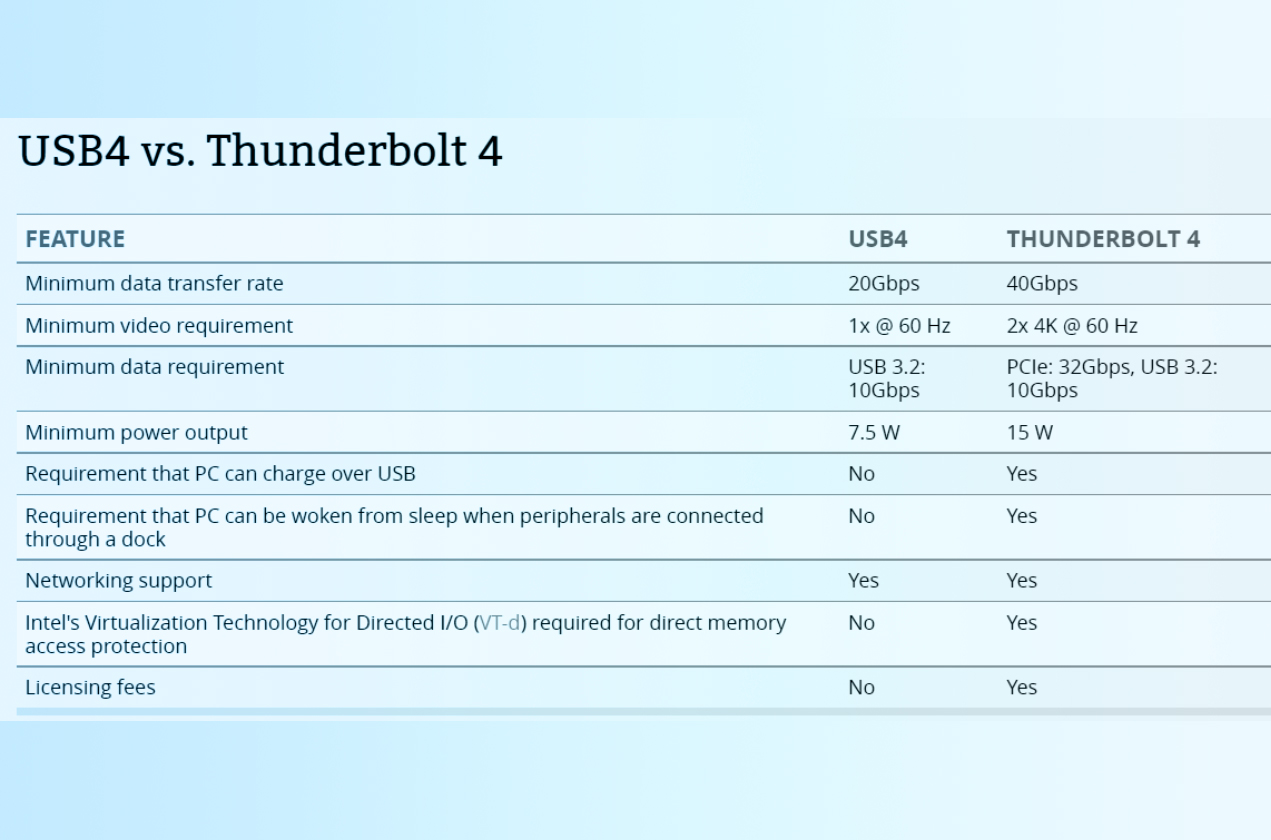A picture to understand the difference between USB4, USB4 v2.0 and Thunderbolt4
The USB-IF organization recently announced the upcoming launch of the USB4 v2.0 specification, which is an upgraded version of the USB4 specification, mainly adding an 80Gbps active cable standard, doubling the speed and making it the fastest interface at present.
Counting USB4 v2.0, plus the existing USB 1.1 to USB4, as well as the thunderbolt interface, there are at least six or seven types of USB interfaces that everyone can see. Each standard speed and physical interface are Different, how to distinguish? This makes many people have a headache. Today, through a few comparison pictures, we can clearly compare the differences between the USB and Thunderbolt interfaces of the past dynasties.
Let’s talk about the USB interface first. The earliest USB 1.1 standard consists of two interfaces, USB-A and USB-B. The speed is so low that it is only 12Mbps, and now it is basically eliminated.
The speed of the USB 2.0 interface has been increased to 480Mbps, and there are several types of physical interfaces. In addition to the conventional A and B types, there are also micro and mini types. Many people may use the most interfaces of this generation, and so far there are many more The phone is in use.
The interface rate of USB 3.0 is 5Gbps, which is the common blue USB interface. It is also the absolute main interface on many computers.
The speed of the USB 3.2 Gen2 interface is increased to 10Gbps, which is also common on many computer hosts. There are four standards for physical interfaces, including USB C, etc.
The rate of USB 3.2 Gen2x2 is 20Gbps. Since this generation, the physical interface is almost unified as USBC. It exists on some high-end motherboards and computers, but it is not popular.
The USB4 era has finally simplified the naming and returned to the previous way. It actually has USB4 20Gbps and 40Gbps, but the physical interface is also unified as USB C.
The biggest change in the new standard USB4 v2.0 is the addition of an 80Gbps speed, but an active cable is required. The specific content will not be clarified until the full specification is released in November.
As for the Thunderbolt Thunderbolt interface, currently mainly Thunderbolt 3 and Thunderbolt 4, both of which are the same in speed and interface, 40Gbps rate and USB C interface are very uniform, the difference is in some details, but it has little effect on ordinary people.
Among the current two new standards, USB4 and Thunderbolt 4 are the most concerned, and the highest speed can reach 40Gbps. After all, the core technology of USB4 is contributed by Intel Thunderbolt 4, but Intel's Thunderbolt 4 is in power supply, video output, minimum speed, etc. The overall aspect is higher. USB4 is oriented to more devices, and the lower limit is more flexible.
The latest USB standard is not USB 4.1, nor USB 4.0 Gen2, nor USB 5.0. USB-IF adopts a new naming convention - Version 2.0. Not only the naming rules are completely unrelated to the past, but the names of the new standards are extraordinarily long. Even to enable the full features of USB4 v2.0 to buy a specific active cable, Otherwise, it is similar to USB4 40Gbps in use.
Faster speed, faster experience
Let's take a look at the new USB4 v2.0 technical standard first, as long as you open the USB-IF official website, you can see the content update announcement of USB4 v2.0 in a prominent position. According to the official introduction, the previously released USB4 standard was developed based on Thunderbolt 3 technology, with a maximum data transfer rate of 40Gbps, while the newly released USB4 was developed based on a new physical layer architecture, with both data transmission and display output protocols carried out replacement.
Benefiting from the upgrade of the physical layer architecture, the transfer rate of USB4 v2.0 can be doubled. According to the official statement, the new interface will be adapted to the newly designed USB Type-C active cable. With the support of this cable, USB4 V2.0 will have a transmission bandwidth of up to 80Gbps, This speed is twice that of the Thunderbolt 4 interface. It is also the fastest physical interface speed currently.
If calculated based on the theory of 80Gbps, when using the USB4 v2.0 interface for data transmission, the theoretical transmission speed can reach up to 10GB/s, which means that it takes less than two minutes to copy a 1TB data file. Of course, this is the data achieved using the "newly designed USB Type-C active cable". If a normal USB cable is used, the speed will be halved to 40Gbps (that is, equivalent to Thunderbolt 4/USB4 level).
The so-called active cable refers to the cable with built-in signal amplifier and optical fiber. Compared with traditional passive copper core wires, active optical fiber wires can be longer, lighter, thinner, and have better anti-interference and attenuation performance. But at the same time, the additional laser and driver chips make the cost much higher than that of ordinary cables, and the price may be as high as several hundred yuan.
USB4 Optical Cable/Ankmax Technology
Looking back at the past few years since the advent of the USB4 standard, it is not difficult to find that the popularity of USB4 is very slow due to the Thunderbolt 3/Thunderbolt 4 technology. Until this year, products using AMD processors and USB4 interfaces were launched on a large scale.
The reason for this is essentially the stakes between Intel and USB-IF members. However, with the arrival of the USB4 v2.0 standard, the Thunderbolt 4 interface has become a relatively backward party for the first time, and AMD has spared no effort to promote this technology on its official Twitter. I believe that in the near future, The transmission capacity and connection performance of the product will be improved by leaps and bounds.





